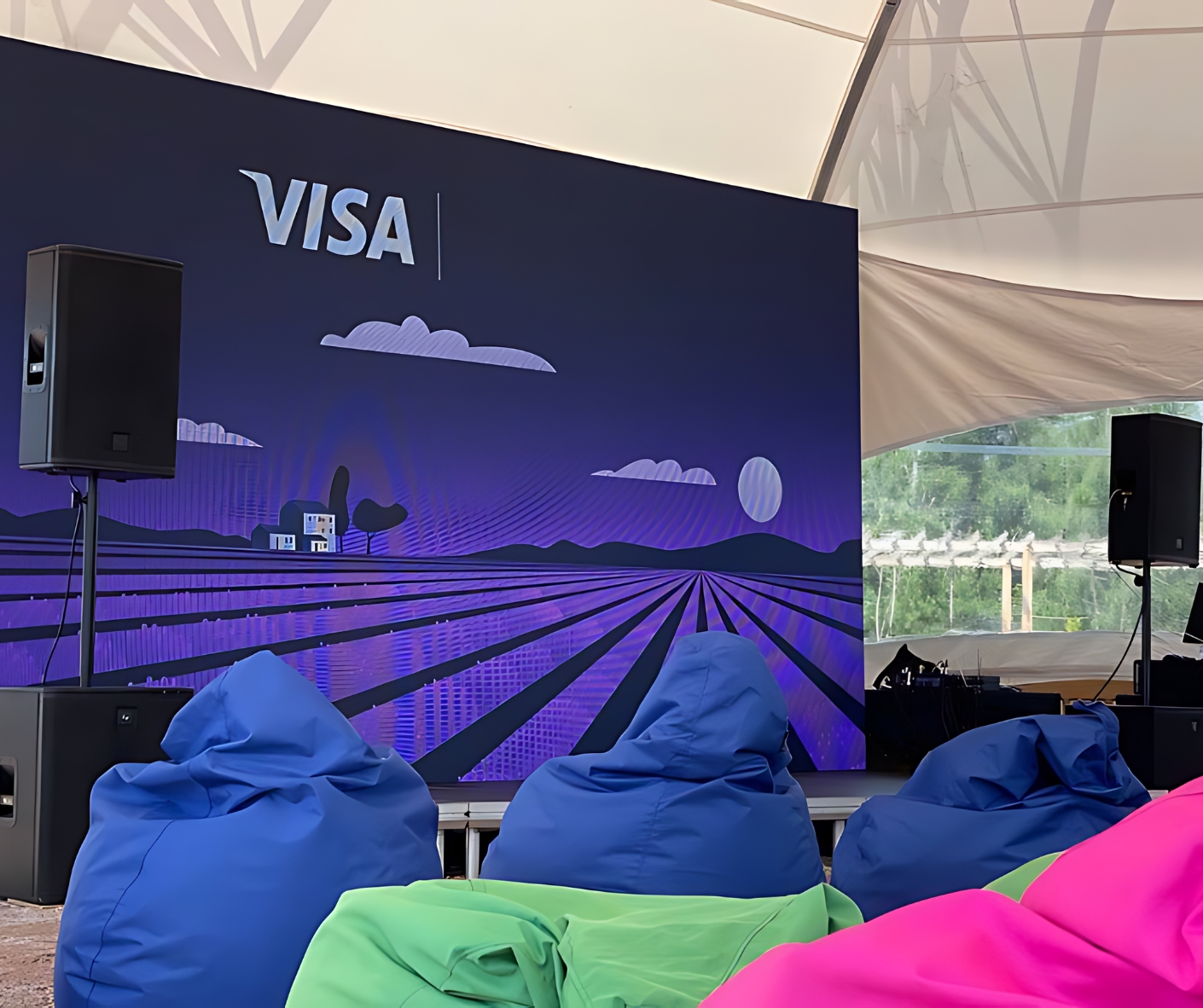
LED screens for business events
If your organization is planning to rent an LED screen in Seattle, then Profigroup is the right place for you. We will consult on all issues, help you choose the equipment that is right for your case, and make the most economically and technologically advantageous offer. Our LED screen will help make your event unforgettable for its participants and make them your regular customers.
When choosing equipment that is designed to provide light graphic information at various business events, their organizers are increasingly choosing LED LED screens. This is due to the fact that LED screens for indoor events allow you to broadcast information (graphs, diagrams, photo and video presentations) in a format that has long been familiar to all computer users. Previously, this issue was resolved using projectors and ordinary white screens. Now, more and more often, consumers choose more technologically advanced LED products, which, due to their modularity, can be scaled (assembled in any size).
What does LED screen mean?
There is a lot of confusion associated with the use of imported abbreviations. For example, LED TV is a name that has become very widespread lately. According to the formal sign, this is a TV with a screen made of LEDs. But this is not true. In fact, its full name should be LED LCD TV (or LED LCD TV). The image in it is formed with the help of liquid crystals (they are more miniature than LEDs), through which the light created by the LEDs passes. But people find it inconvenient to use long names, as a result, an LCD TV with LED backlighting turns into an LED (LED TV).
Indoor LED screens
Electronic boards, panels and advertising structures using LED technologies are used both indoors and outdoors. They serve to transmit light graphic information in dynamic mode. Information in the form of pictures, texts and video clips.
The largest outdoor LED TV screen (located in one of the stadiums in the USA) has a size of 49 × 22 meters. Outdoor screens are more “brutal”, heavy and energy-intensive due to their work in difficult conditions. They cost several times more than their “home” counterparts. They have a large pixel pitch (usually not less than 10 mm), low image density, high luminosity. They are designed for viewing from a long distance. Electricity is consumed in tens of kilowatts.
Indoor LED screens are much more “refined”, lightweight, thin, and consume little electricity. They do not need to shine, competing with the sun; for indoors, a luminosity in the range of 800-1200 cd/m2 is sufficient (versus 6000 for outdoor screens). They cost much less than outdoor ones, which is why they have become widespread. A large number of companies (including domestic ones) are engaged in the production and sale of LED screens. A market for LED screen rental has emerged and is actively developing. Rental prices have decreased to values that are comfortable for market participants, motivating them to use this tool more often during business events.
LED screens for indoor events
The main events for which LED screens are used are:
- exhibitions;
- presentations;
- meetings (reporting, founding, etc.)
- business trainings and seminars;
- all kinds of social events
In the case of exhibitions, the owners/organizers of the exhibition complex usually purchase LED equipment as their own (since they use it on a permanent basis). Exhibition participants – companies presenting their products/services at it, usually use the LED screen rental service.






